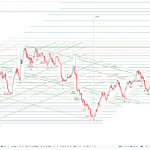Just as I forecasted, the tech stock selloff ended Wednesday as the Nasdaq rose 0.73%. The S&P 500, Russell 2000, and the Dow Jones Industrial Average all hit an all-time closing high. The ECB’s $60 billion in bond buying per month combined with investors putting money into ETFs with a “buy the dip” strategy means the market has an endless bid. It was reported on CNBC that only 10% of the trading in the stock market is regular stock picking. 60% of trading is passive and quantitative which is double what it was a decade ago. This means passive and quantitative strategies have yet to dominate the market in a downturn. It will be interesting see how this alters the selling. It could become indiscriminate.
The positive aspect of this change is if you do your own research, it could be easier to find diamonds in the rough. The problem is in order to have the stocks reach their intrinsic value, this trend in passive investing would have to reverse. The way you analyze stocks in the meantime must be based on how the robots do it. Instead riding the waves of big hedge fund whales who do fundamental research, investors must follow the stocks the quants like. This trend in passive investing will continue until a change in the market causes this strategy to do poorly. It could be increasingly dangerous if there’s no major correction in the next few years because then everyone will be passively investing.
Even though the market may act wonky in the intermediate term due to these changes, I still think valuing stocks based on their future earnings makes sense. Therefore, let’s look at the latest stats on the bottom up S&P 500 earnings reports. As you can see from the chart below, there were 37 firms which had positive EPS preannouncements between Q1 and Q2. This is the highest number of positive preannouncements since Q1 2012. It was 9 higher than the peak of earnings season in Q3 2014. Clearly this past quarter was great. We’re now just tallying the score sheet to see how good it was.













Leave A Comment